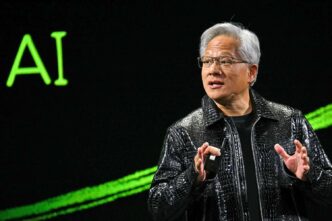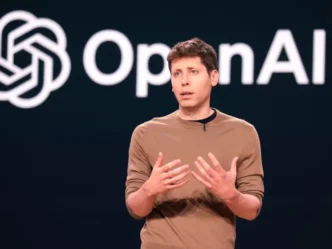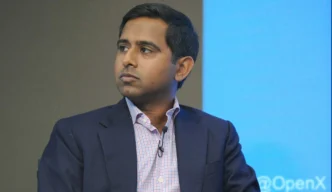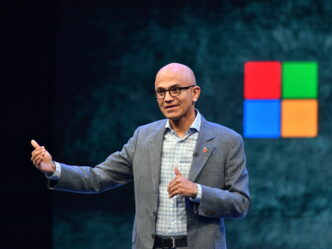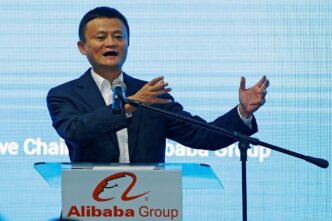As AI agents take on increasingly complex and repetitive tasks, such as supply chain management and equipment ordering, the lack of interoperability among agents remains a major challenge. Organizations, Google included often deploy agents developed by different vendors across various frameworks, leading to siloed systems that cannot effectively communicate or coordinate. This lack of integration creates conflicts between agents, making it difficult to establish standardized workflows and adding additional complexity through middleware, which can lead to more potential failure points.
Google Introduces the A2A Protocol for AI Agent Communication
At Cloud Next 2025, Google unveiled its Agent2Agent (A2A) protocol, designed to standardize communication across diverse AI agents. A2A is an open protocol that facilitates interaction and collaboration between independent AI agents, regardless of their underlying platforms or vendors. Complementing Anthropic’s Model Context Protocol (MCP), which connects agents to tools and resources, A2A connects agents to one another. This ensures seamless, secure, and real-time communication, enabling AI agents to work together more efficiently across different systems.
In an A2A-enabled environment, agents perform two roles: the client agent, which initiates tasks to achieve a goal or on behalf of a user, and the remote agent, which receives and acts on the client’s requests. Depending on the interaction, an agent can switch roles from client to remote. The protocol defines a standardized message format and workflow for these interactions, ensuring consistency in task execution.
The A2A protocol has gained broad support, with over 50 technology partners contributing to its development, including Intuit, Langchain, MongoDB, Atlassian, PayPal, Salesforce, SAP, and others. Service providers like Capgemini, Accenture, Deloitte, and PwC are also backing the protocol. This collaborative support highlights the widespread interest in fostering AI agent interoperability and the potential benefits for organizations across industries.
HyperCycle: Aligning with A2A Principles for Cross-Platform Interoperability
HyperCycle is leveraging the principles of A2A to enhance its own AI agent platform. Its Node Factory framework addresses the interoperability challenges by enabling the deployment of multiple agents from different developers, allowing them to collaborate seamlessly. The platform introduces the concept of the “internet of AI” by utilizing self-perpetuating nodes and a creative licensing model, enabling scalable AI deployments.
By standardizing interactions and supporting agents across different platforms, the Node Factory facilitates cross-platform interoperability. HyperCycle’s peer-to-peer network connects agents within a cohesive ecosystem, eliminating silos and enabling data sharing and coordination across nodes. The platform’s self-replicating nodes scale to meet growing demand, while developers can customize solutions by combining agents in innovative ways, addressing scalability and silo issues.
HyperCycle’s decentralized platform operates on Toda/IP, a protocol that parallels TCP/IP, enabling the integration of third-party agents into its network. This approach allows developers to enhance their agents’ functionality by incorporating external tools, promoting collaboration and intelligence sharing across the platform.
HyperCycle’s CEO and A2A’s Potential
Toufi Saliba, CEO of HyperCycle, praised Google’s A2A protocol as a major milestone in the development of collaborative AI agents. In an X post, he highlighted the compatibility between HyperCycle’s Node Factory and A2A, stating that A2A’s openness would allow agents from multiple platforms, such as Google Cloud, AWS, and Microsoft, to seamlessly interact with HyperCycle’s nodes. This collaboration, according to Saliba, will provide AI agents with enhanced access to resources across the “internet of AI.”
HyperCycle’s Layer 0++ Blockchain Infrastructure
HyperCycle’s Layer 0++ blockchain infrastructure complements the A2A protocol by offering a secure, decentralized platform for AI interactions. This innovative blockchain operates on Toda/IP, which divides network packets into smaller pieces and distributes them across nodes, enhancing speed and security. Layer 0++ also bridges to other popular blockchains like Bitcoin, Ethereum, and Polkadot, extending its functionality without competing with existing blockchain technologies.
Google Use Cases for HyperCycle: DeFi, Swarm AI, and Beyond
HyperCycle’s platform has wide-reaching potential in several domains, including DeFi (Decentralized Finance), swarm AI, media ratings and rewards, and decentralized payments. Swarm AI allows individual agents to collaborate and solve complex problems more efficiently, with HyperCycle’s platform enabling frequent interoperability among agents.
The platform also opens opportunities for micro-transactions in media networks, providing low-cost, high-frequency on-chain trading. In DeFi, it can streamline payments and enhance the efficiency of blockchain transactions. HyperCycle’s innovative solutions help facilitate these use cases by enabling high-speed, low-cost transactions.
HyperCycle is already working to improve global access to information. In January 2025, the platform launched a joint initiative with YMCA to create an AI-powered app, Hyper-Y, which connects 64 million people in 12,000 YMCA locations worldwide, offering them access to global network information. This initiative showcases HyperCycle’s commitment to connecting communities and advancing the accessibility of AI tools.
Both Google’s A2A protocol and HyperCycle’s efforts are pushing the boundaries of AI agent interoperability, collaboration, and scalability. Google’s A2A aims to standardize agent communication, while HyperCycle’s platform fosters a collaborative environment by connecting agents across diverse networks. Together, these initiatives promise to unlock new possibilities for AI-driven problem-solving and pave the way for more flexible and powerful AI systems.


